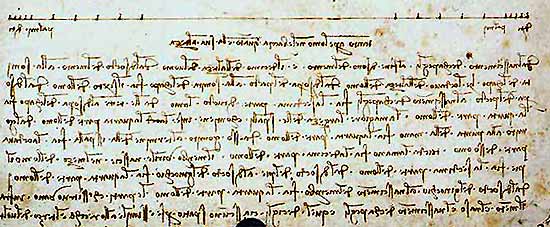[Camille Pitsch]
Leonard Da Vinci was regarded as perhaps one of the most influential artists, inventors, and thinkers of the Renaissance.
Embodying the term 'Renaissance Man', Da Vinci remains one of the more complex historical figures during this time, and continues to surprise us today with his many accomplishments.
Master
Because of his diverse interests, Da Vinci is known for his lack of complete works. A 'master of none', Da Vinci is a prime example of surpassing barriers and proving the limitlessness of education and knowledge.
However, it cannot be said that Da Vinci was not good at what he did...
This is design for a tank that Da Vinci created in the late 1400s. Technology such as this would not be seen again until WW1.
While many of his works were technologically flawed by today's standards, Da Vinci sets the bar for arts, sciences and engineering
The Mona Lisa, arguably the most well known piece of art created by Da Vinci, is the one of the most recognized, studied, and viewed pieces of art in history
(Racquel Reimer)
Art and science both came hand in hand for Da Vinci. Many of his paintings have a scientific approach to them which leaves a unique effect on the viewer. This is also what made Leonardo Da Vinci stand out from his fellow peers. He was one of few artists who mastered the "vanishing point" concept. "The Last Supper" (shown below) is a great example of this technique. The painting has a vast sense of depth and three-dimensionality in a two-dimensional frame. He also experimented with perspective in his works. In the Mona Lisa (shown above no matter what position you are of the painting her eyes are looking at you giving you the perspective that the eyes are moving.

(Racquel Reimer)
Art and science both came hand in hand for Da Vinci. Many of his paintings have a scientific approach to them which leaves a unique effect on the viewer. This is also what made Leonardo Da Vinci stand out from his fellow peers. He was one of few artists who mastered the "vanishing point" concept. "The Last Supper" (shown below) is a great example of this technique. The painting has a vast sense of depth and three-dimensionality in a two-dimensional frame. He also experimented with perspective in his works. In the Mona Lisa (shown above no matter what position you are of the painting her eyes are looking at you giving you the perspective that the eyes are moving.

Mystery
As one of the most well known figures in the Renaissance, there is still much that remains unknown about Da Vinci. Not only are historians left with unfinished manuscripts to decipher, but much of Leonardo's life is up to speculation.
While Da Vinci was buried in Church of Saint-Florentin in Amboise, France, many of the graves were pillaged and destroyed, leaving the location of Da Vinci unknown. It was not until the 1800s when poet, Arsène Houssaye, discovered a skeleton with slab that possibly is inscribed with Da Vinci's name in Latin. DNA testing is continually being conducted to help uncover the truth.
Another Myth: "Leonardo wrote backwards as a code to conceal his secrets"
(Anita Woloszyn)Leonardo has the world’s most recognizeable handwriting. But his distinctive mirror-writing was not intended to conceal secrets. What code could possibly be easier to crack? As one of Leonardo’s friends pointed out, all you needed to do was to hold it up to a mirror. Far from keeping his ideas secret, Leonardo wanted to publish his works. His treatise on painting, which he hoped to disseminate to the wider world, was written in his reversed handwriting. It appears that, as lefty, he simply found a right-to-left linear motion easier

Legend
While much can be said of the various artists and thinkers in the Renaissance time, there are few that can match the legacy of Leonardo Da Vinci. A scientist, painter, and revolutionary, Da Vinci stands out as quite possibly the most prolific and accomplish Renaissance figure. Much of what we know about modern day engineering, science, and painting can be traced back to the thoughts andVinci, allowing his work to stand the test of time.writings of Da


I apologize for the highlighting at the bottom of the page. I have tried everything to get rid of it, including re typing the document. I am also unsure as to why the images show up twice. If you highlight the document, you should be able to read it.
ReplyDeleteCamille, I tired to fix it by highlights the background black and leaving the words white but that did not seem to fix all of it.
ReplyDelete